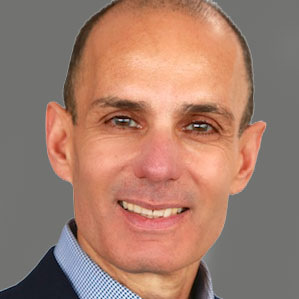The Five Myths of Strategic Planning: Part Two
Henry Mintzberg, in his seminal 1993 book The Rise and Fall of Strategic Planning, refers to strategic planning as an “oxymoron,” claiming “the process can straitjacket an organization by stifling innovation and commitment.”
In my last blog, I shared the first three of five myths that undermine most leaders’ effectiveness at generating powerful strategies and creating the ownership and accountability of their teams toward their execution. Here are the remaining two:
Myth #4: Size Matters
The typical strategic planning process is an exclusive affair. Executives often believe that the fewer people who are involved in the process, the easier it will be. As such, they often limit participation to a small group of business unit heads and/or the strategy development group.
But putting together the strategic planning team is not a matter of finding the perfect group size — it’s about gathering together the right people.
In order to create the most powerful strategy with the strongest sense of ownership and accountability for execution, you must include both those individuals who have the best expertise about where the organization needs to go and the people who are going to support and implement the agreed upon direction and objectives.
While some impatient executives might see this broader inclusion, for example of support functions, as slowing things down, slower in this case is faster – since doing things right from the start saves time, money, and prevents having to do it all, all over again when people are paying lip-service to the execution down the road.
Myth #5: Communication Creates Commitment
Town halls, road shows, all-hands meetings, and webinars are all popular vehicles for spreading the word and gaining buy-in once the strategic plan has been crafted. Most senior executives will tout these communication efforts as a critical step in helping the organization understand what the strategy means, and what role each person plays in bringing it to fruition.
But while these types of events can generate a significant amount of energy and excitement, they also contain serious pitfalls that can lead to cynicism rather than commitment.
One of these pitfalls is the mistaken belief that staff are empty vessels, just waiting for the word from above about where the company is headed and what they should be doing to help it get there.
Far from being empty, people are already full. Full with frustrations and disappointments about what executives have said they were going to do in the past and what they actually did. Full from promises made and not kept, and full from accepting requests to get involved in a company strategy and then being ignored when times got tough.
Employees who have been around have little time— or tolerance — for fanfare and hype. What employees want to know is that their bosses understand, and are committed to addressing, the challenges they face in putting a strategy in place.
For example: If staff communicate that a certain supervisor is a tyrant, will management listen and hold that person accountable for demonstrating the values they are promoting? If systems are broken or inadequate, will management hear the impact that this has on staff and make the proper investment to set things right? If staff are caught in the crossfire of feuding bosses, will the leaders of the company leave them to their warring factions or let them know political gamesmanship won’t be tolerated?
Only by listening to what the staff are saying, with both their words and behaviors, will leaders become aware of and able to address the issues that are preventing them from embracing the strategic objectives management is asking them to pursue. When this type of listening happens, and action is taken, commitment to the strategic plan follows suit.
Strategic planning is not an accounting and forecasting exercise; it’s not an offsite spent in a room hashing out who’s willing to go along with what, and it’s not a well-written bunch of words put to paper and placed in a binder. It is a living, breathing, organic leadership action. It requires not a calculator, but the courage and conviction to inspire everyone to be their best and get on the same page.
As Academy Award-winning director Francis Ford Coppola famously said:
“The first step in making a good movie is getting everyone involved to be making the same movie.”
Photo by: Michael Cardus






Leave a Reply
Want to join the discussion?Feel free to contribute!